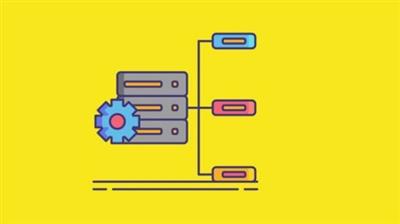
MP4 | Video: h264, 1280x720 | Audio: AAC, 44.1 KHz, 2 Ch
Genre: eLearning | Language: English + srt | Duration: 21 lectures (1h 57m) | Size: 523.1 MB
Connect to data then transform, visualize and publish.
What you'll learn:
Setup Power BI Environment
Explore Power BI Desktop
Explore Power BI Service
Connect to data sources
Extract Data
Transform Data
Visualize Data
Publish Data
Requirements
Computer and internet access required
Description
Power BI is a collection of software services, apps, and connectors that work together to turn your unrelated sources of data into coherent, visually immersive, and interactive insights. Your data may be an Excel spreadsheet, or a collection of cloud-based and on-premises hybrid data warehouses. Power BI lets you easily connect to your data sources, visualize and discover what's important, and share that with anyone or everyone you want.
Power BI consists of several elements that all work together, starting with these three basics:
A Windows desktop application called Power BI Desktop.
An online SaaS (Software as a Service) service called the Power BI service.
Power BI mobile apps for Windows, iOS, and Android devices.
These three elements-Power BI Desktop, the service, and the mobile apps-are designed to let you create, share, and consume business insights in the way that serves you and your role most effectively.
Beyond those three, Power BI also features two other elements:
Power BI Report Builder, for creating paginated reports to share in the Power BI service. Read more about paginated reports later in this article.
Power BI Report Server, an on-premises report server where you can publish your Power BI reports, after creating them in Power BI Desktop.
How you use Power BI may depend on your role in a project or on a team. Other people, in other roles, might use Power BI differently.
For example, you might primarily use the Power BI service to view reports and dashboards. Your number-crunching, business-report-creating coworker might make extensive use of Power BI Desktop or Power BI Report Builder to create reports, then publish those reports to the Power BI service, where you view them. Another coworker, in sales, might mainly use the Power BI phone app to monitor progress on sales quotas, and to drill into new sales lead details.
If you're a developer, you might use Power BI APIs to push data into datasets or to embed dashboards and reports into your own custom applications. Have an idea for a new visual? Build it yourself and share it with others.
You also might use each element of Power BI at different times, depending on what you're trying to achieve or your role for a given project.
Who this course is for
Beginner Data Analyst
Beginner Data Science Analyst
Beginner Data Engineer
Beginner Database Administrator
Beginner Database Developer
Homepage
https://www.udemy.com/course/microsoft-power-bi-connect-transform-visualize-publish/Buy Premium From My Links To Get Resumable Support,Max Speed & Support Me

https://uploadgig.com/file/download/2ba30b946459C1c1/d1pbj.Microsoft.Power.BI.Connect.Transform..Visualize.Publish.rar

https://rapidgator.net/file/9cf77303bc9b2f4b46daf9fffae23a32/d1pbj.Microsoft.Power.BI.Connect.Transform..Visualize.Publish.rar.html

http://nitroflare.com/view/81F91E203B458C1/d1pbj.Microsoft.Power.BI.Connect.Transform..Visualize.Publish.rar
